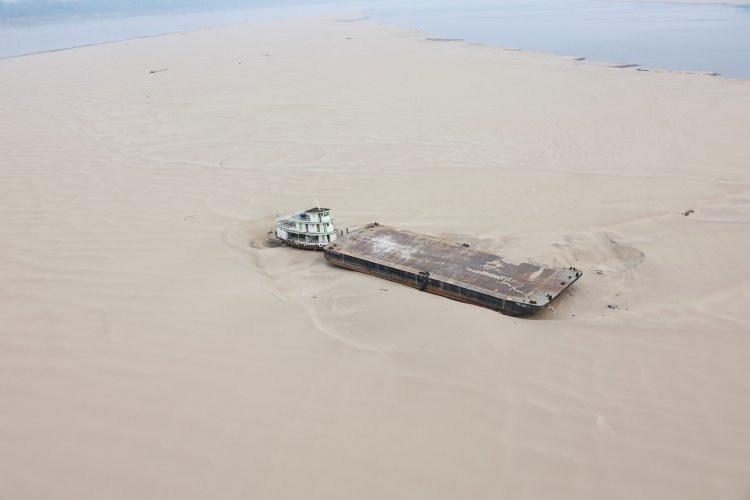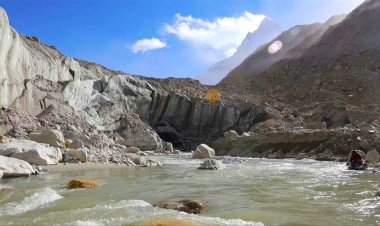Amazon River Reaches Historic Low Amid Drought

The worst drought on record has lowered the water level of the rivers in the Amazon basin to historic lows, in some cases drying up riverbeds that were navigable waterways.
The Solimoes, one of the main tributaries of the mighty Amazon River whose waters from the Peruvian Andes, has fallen to its lowest-ever level in Tabatinga, the Brazilian town on the border with Colombia.
Downriver in Tefe, a branch of the Solimoes has dried up completely.
The nearby Lake Tefe, where more than 200 freshwater dolphins died in last year's drought, has also dried up, depriving the endangered pink mammals of a favorite habitat.
"We are going through a critical year, last year was already the hottest year in the last 125,000 years, this year several months have broken last year's records," said Greenpeace spokesperson Romulo Batista, pointing to the riverbed of the branch of the Solimoes turned to mounds of sand.
“We are passing through the riverbed of the Solimoes River, this whole area that we see of sand is the riverbed of the largest river in the world and this is the second consecutive year of major droughts in the Amazon, an unprecedented fact,” he added.
The second consecutive year of critical drought has parched much of Brazil's vegetation and caused wildfires across the South American nations, cloaking cities in clouds of smoke.
The Solimoes in Tabatinga was measured at 4.25 meters below the average for the first half of September. At Tefe, the river was 2.92 meters below the average level for the same two weeks last year, and is expected to drop further to its lowest ever.
In Manaus, the Amazon's largest city, where the Solimoes joins the Rio Negro to form the Amazon River proper, the level of the Rio Negro is approaching its record low reached in October last year, when it dropped to the lowest level since measuring began in 1902.















